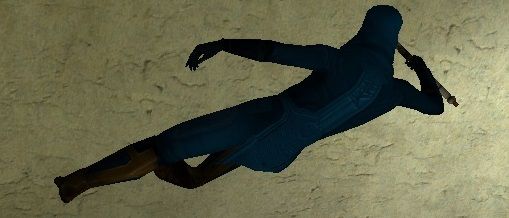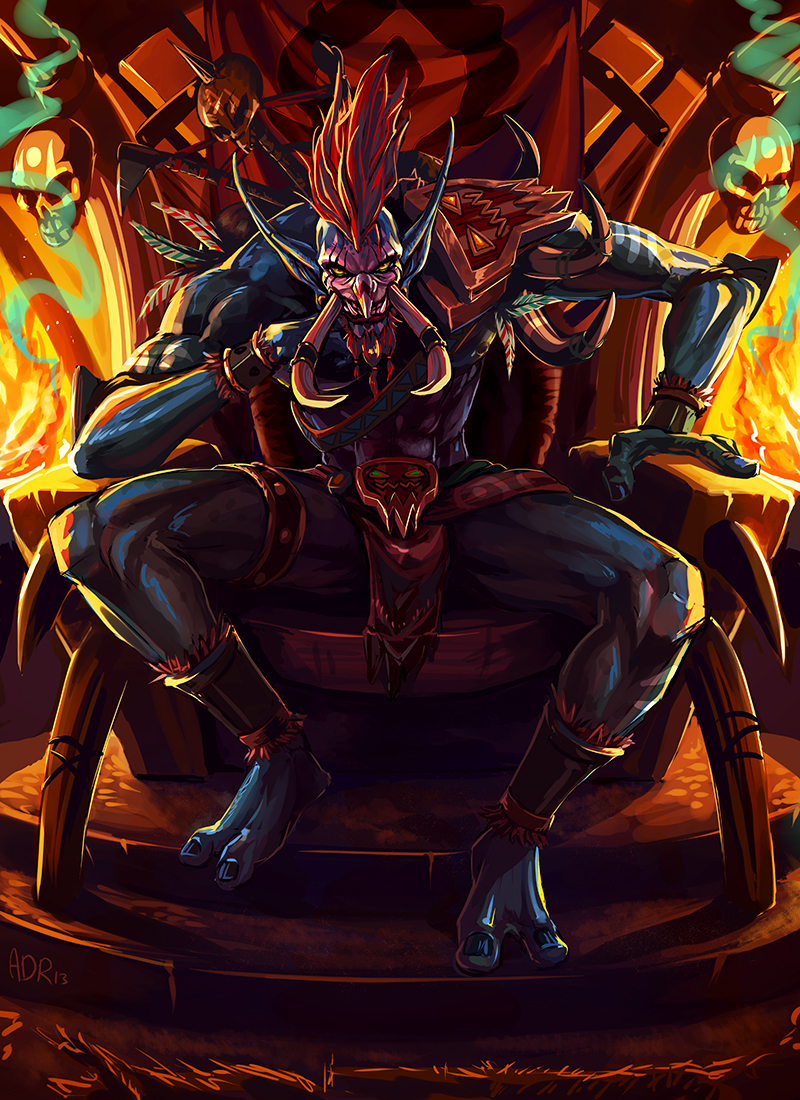Post by Wolfeye on Jul 26, 2015 18:51:08 GMT
Never thought I'd make a post on something that is hard enough to explain in-game, let alone purely text-based... But, I think it's a valuable asset to anyone's combat, so I'm adding this so people can (hopefully) learn from it. Unlike my usual posts, this will not be sections, but rather just titled by the kinds of delays. I will also be copy-pasting a short excerpt from my previous post regarding staff and duals fighting. Now, without further ado, lets get started.
*Also, at the bottom of this post, I will be posting an excerpt from LemonLime's post on how to wallrun and glide if you don't already know*
**Thanks again Dzonkis for the wonderful video editing work!**
Allow me first to explain my terminology: A full delay is when the strike acts completely normal, but does not immediately start. A half delay is when the attack begins mid-strike. Also note, unless I specifically specify that the attack is active, all attacks are non-damaging until the delay occurs.
Here is a reference video for all types of delays that you can refer back to throughout the reading!
Video brought to you by the RCDVT, your daily source of vitamins J, K, and A.
Wallrun Delays: Simplicity itself. But it has to be split into two subparts.
-Upward wallruns (See "Wall run" at the bottom): If you begin a strike, and immediately wallrun, your strike will continue shortly after your wallrun ends. If you wallrun high, it will end immediately after the wallrun. If you wallrun for just a second and jump off, the delay will take a moment before immediately beginning mid-strike.
-Side wallruns (See "Wall strafe" at the bottom): Same thing, start a strike, but then side wallrun on the wall. This differs because it creates a full delay, whereas the upward wallrun creates a half delay.
-Side wallruns (Active delays): This works the same as the previous, except with side wallruns, you can start a strike and wait a moment so that it is in motion, then wallrun. This will allow it to be an active delay, and will deal damage to anything it touches while in this state.
This is useful sometimes for getting the upper hand, especially against a staff, but be careful because it is mildly predictable. Generally speaking, you only want to use this with strong style. While it can be done in every other style (including fast...) it is practically worthless in almost every other circumstance.
Wallflip Delays: A wallflip is what occurs when you stand next to a wall, then hold the direction of the wall and tap jump. You'll basically do a little flip off the wall. Splitting this into two parts as well.
-Pre-swing: Begin the strike, flip off the wall before the strike can swing, and it will be a full delayed attack.
-Post-swing: Strike, allow it to begin, and then flip off the wall. This will create an active delay.
Backflip delays: Any strike that you use, in any style, can be used with these. Again, generally speaking, you may wish to only use strong, however this is at least somewhat more effective with medium and staff than wallrun delays are. Again, this has two sub categories.
-Pre-swing: As like before, you want to begin the strike and then immediately backflip, so that the strike doesnt have time to swing. This will create a full delay once you have landed.
-Post-swing: This time, instead of immediately backflipping, wait for a second to allow the strike to begin motion, and then backflip. This will create an in-strike attack that can be used to aerial kill opponents, because it is active, but you will enter the reset stage as soon as you land from the backflip.
Glide Delays (See "Glide" at the bottom): Doing a glide delay is really about learning when to time the strike, and how high in the air to go with the delay. Generally speaking, you want to be relatively low with the glide, and begin the strike near landing. This will create a half delay that can be exceptionally useful for catching an opponent off-guard, because it is far less predictable than most other delays. It doesnt matter what direction the glide is in, it all works. Although as with most delays, usually more effective with strong style than anything else.
-Wallgrab Delay: Because a wallgrab that is above the point of origin creates a glide (here for more info) you can get a half-delay from wallgrabbing
Cartwheel Delays: Really, cartwheels are too big of a topic for a short explanation here. So here is a link to a full informative guide on those.
Standard Delay: This is one that took me a long while to get down. Its incredibly hard to tell if you're doing it right or not. In strong style, swing once, then wait for the reset of the saber at the end. Before the strike ends, attack again and you will get a slightly faster attack. This attack does count as part of a chain, and you can do this for every attack in a given chain. This can be started with any attack's reset, and the delay itself can be used with almost any combination. Certain ones like A, delayed A do not work. It can also be done after chains. For example, D-D, then a delayed WD. Because of this one's difficulty, I highly advise watching the video at the top. I'm also including a video from FL below.
Also note, a regular chain strike slows you. In between Standard Delay swings, you go back to standard running speed. This means that using these delays is more efficient for enter and exit speed than holding and chaining attacks, while still being faster to strike than brand new swings.
Now that you understand the basics of a standard delay, lets apply it to the next delay...
A-Strike Delay: With any of the faster saber styles (Staff/Duals/Medium/Fast) this will work. Here is where I will insert that excerpt from my previous post:
Hopefully that explanation is good enough to grasp the idea of it. Unlike with strong style, you cannot delay most attacks with faster styles. You can only really delay A-variety swings (AW, AS, and A) though, generally speaking, you'll only want to delay A-swings.
And here is LemonLime's explanation about movements in case you don't know:
Original post here:
fallenlegendclan.proboards.com/thread/193/lesson-1-jumping#ixzz3h1bMxmdw
Sidenote: Glides that exceed a certain height will cause lockups, so try not to go too high.
A Glide:

About Delay Combos: Yes, you can combine delays. Not all the time though. Things like backflip delays after a wall delay work, for example. So give a shot at trying to combine some and see what you can come up with (I'm not going into detail here about all the possible combinations, because this post is already long enough. But I encourage you to experiment with the different delay combos).
Questions, comments, talk about the weather? Go ahead and post below and I'm happy to answer or edit!
*Also, at the bottom of this post, I will be posting an excerpt from LemonLime's post on how to wallrun and glide if you don't already know*
**Thanks again Dzonkis for the wonderful video editing work!**
Allow me first to explain my terminology: A full delay is when the strike acts completely normal, but does not immediately start. A half delay is when the attack begins mid-strike. Also note, unless I specifically specify that the attack is active, all attacks are non-damaging until the delay occurs.
Here is a reference video for all types of delays that you can refer back to throughout the reading!
Video brought to you by the RCDVT, your daily source of vitamins J, K, and A.
Wallrun Delays: Simplicity itself. But it has to be split into two subparts.
-Upward wallruns (See "Wall run" at the bottom): If you begin a strike, and immediately wallrun, your strike will continue shortly after your wallrun ends. If you wallrun high, it will end immediately after the wallrun. If you wallrun for just a second and jump off, the delay will take a moment before immediately beginning mid-strike.
-Side wallruns (See "Wall strafe" at the bottom): Same thing, start a strike, but then side wallrun on the wall. This differs because it creates a full delay, whereas the upward wallrun creates a half delay.
-Side wallruns (Active delays): This works the same as the previous, except with side wallruns, you can start a strike and wait a moment so that it is in motion, then wallrun. This will allow it to be an active delay, and will deal damage to anything it touches while in this state.
This is useful sometimes for getting the upper hand, especially against a staff, but be careful because it is mildly predictable. Generally speaking, you only want to use this with strong style. While it can be done in every other style (including fast...) it is practically worthless in almost every other circumstance.
Wallflip Delays: A wallflip is what occurs when you stand next to a wall, then hold the direction of the wall and tap jump. You'll basically do a little flip off the wall. Splitting this into two parts as well.
-Pre-swing: Begin the strike, flip off the wall before the strike can swing, and it will be a full delayed attack.
-Post-swing: Strike, allow it to begin, and then flip off the wall. This will create an active delay.
Backflip delays: Any strike that you use, in any style, can be used with these. Again, generally speaking, you may wish to only use strong, however this is at least somewhat more effective with medium and staff than wallrun delays are. Again, this has two sub categories.
-Pre-swing: As like before, you want to begin the strike and then immediately backflip, so that the strike doesnt have time to swing. This will create a full delay once you have landed.
-Post-swing: This time, instead of immediately backflipping, wait for a second to allow the strike to begin motion, and then backflip. This will create an in-strike attack that can be used to aerial kill opponents, because it is active, but you will enter the reset stage as soon as you land from the backflip.
Glide Delays (See "Glide" at the bottom): Doing a glide delay is really about learning when to time the strike, and how high in the air to go with the delay. Generally speaking, you want to be relatively low with the glide, and begin the strike near landing. This will create a half delay that can be exceptionally useful for catching an opponent off-guard, because it is far less predictable than most other delays. It doesnt matter what direction the glide is in, it all works. Although as with most delays, usually more effective with strong style than anything else.
-Wallgrab Delay: Because a wallgrab that is above the point of origin creates a glide (here for more info) you can get a half-delay from wallgrabbing
Cartwheel Delays: Really, cartwheels are too big of a topic for a short explanation here. So here is a link to a full informative guide on those.
Standard Delay: This is one that took me a long while to get down. Its incredibly hard to tell if you're doing it right or not. In strong style, swing once, then wait for the reset of the saber at the end. Before the strike ends, attack again and you will get a slightly faster attack. This attack does count as part of a chain, and you can do this for every attack in a given chain. This can be started with any attack's reset, and the delay itself can be used with almost any combination. Certain ones like A, delayed A do not work. It can also be done after chains. For example, D-D, then a delayed WD. Because of this one's difficulty, I highly advise watching the video at the top. I'm also including a video from FL below.
Also note, a regular chain strike slows you. In between Standard Delay swings, you go back to standard running speed. This means that using these delays is more efficient for enter and exit speed than holding and chaining attacks, while still being faster to strike than brand new swings.
Now that you understand the basics of a standard delay, lets apply it to the next delay...
A-Strike Delay: With any of the faster saber styles (Staff/Duals/Medium/Fast) this will work. Here is where I will insert that excerpt from my previous post:
The concept is simple: You strike once in any direction (usually easier with an A or D strike) and then you let go until your saber reaches the "reset" stage. This is the very near-end of your strike, where it effectively does no damage. Once it reaches that, you can then strike again with a A-strike, which will be a delayed hit.
Normally, if you are still holding attack, or press attack a second time when the mid-strike occurs, it will chain the attacks together. In this case, we want to wait until after the opportunity for it to chain has passed, because we do not want the strike to chain. We want it to be two individual strikes. However, by starting the A-strike before the previous strike can fully finish, it cuts off the very beginning of the A-strike, which makes it immediately enter the "mid-strike" phase, that often will pass right through your opponents blocks. This is best used against any style other than strong style, as your delay will not be able to break a strong style hit. You'll just be suiciding if you try to beat a poke with that. However, it does make the attack faster, which is good for changing timings.
Also good to note: Remember I said "any direction" a moment ago? What I really mean there is, the first strike doesn't matter. Any first-strike of your choosing works. This also means that you can delay off of other delays.
Normally, if you are still holding attack, or press attack a second time when the mid-strike occurs, it will chain the attacks together. In this case, we want to wait until after the opportunity for it to chain has passed, because we do not want the strike to chain. We want it to be two individual strikes. However, by starting the A-strike before the previous strike can fully finish, it cuts off the very beginning of the A-strike, which makes it immediately enter the "mid-strike" phase, that often will pass right through your opponents blocks. This is best used against any style other than strong style, as your delay will not be able to break a strong style hit. You'll just be suiciding if you try to beat a poke with that. However, it does make the attack faster, which is good for changing timings.
Also good to note: Remember I said "any direction" a moment ago? What I really mean there is, the first strike doesn't matter. Any first-strike of your choosing works. This also means that you can delay off of other delays.
And here is LemonLime's explanation about movements in case you don't know:
Wall run
This move is technically not a jump, but it involves jumping. If you run straight at a wall and click jump about three steps before ou hit the wall, and then again when you hit the wall, you should start running up the wall. This run will continue until either you reach the top of the wallrun, or you release your forward button.
Wall strafe
This move is reminicent of the matrix. If you stand next to a wall , run diagonally into it ( AW or WD ) and hit jump, you should begin running across the wall horizontally. It is useful for escaping, and timing attacks.
Glide
The glide is one of the harder jumps to perform. While running, release your direction key(s) and instantly after that do a force jump. If performed right, your character will "glide". This will be useful in some of the following lessons, so be sure that you can do it before moving on.
This move is technically not a jump, but it involves jumping. If you run straight at a wall and click jump about three steps before ou hit the wall, and then again when you hit the wall, you should start running up the wall. This run will continue until either you reach the top of the wallrun, or you release your forward button.
Wall strafe
This move is reminicent of the matrix. If you stand next to a wall , run diagonally into it ( AW or WD ) and hit jump, you should begin running across the wall horizontally. It is useful for escaping, and timing attacks.
Glide
The glide is one of the harder jumps to perform. While running, release your direction key(s) and instantly after that do a force jump. If performed right, your character will "glide". This will be useful in some of the following lessons, so be sure that you can do it before moving on.
fallenlegendclan.proboards.com/thread/193/lesson-1-jumping#ixzz3h1bMxmdw
Sidenote: Glides that exceed a certain height will cause lockups, so try not to go too high.
A Glide:

About Delay Combos: Yes, you can combine delays. Not all the time though. Things like backflip delays after a wall delay work, for example. So give a shot at trying to combine some and see what you can come up with (I'm not going into detail here about all the possible combinations, because this post is already long enough. But I encourage you to experiment with the different delay combos).
Questions, comments, talk about the weather? Go ahead and post below and I'm happy to answer or edit!






